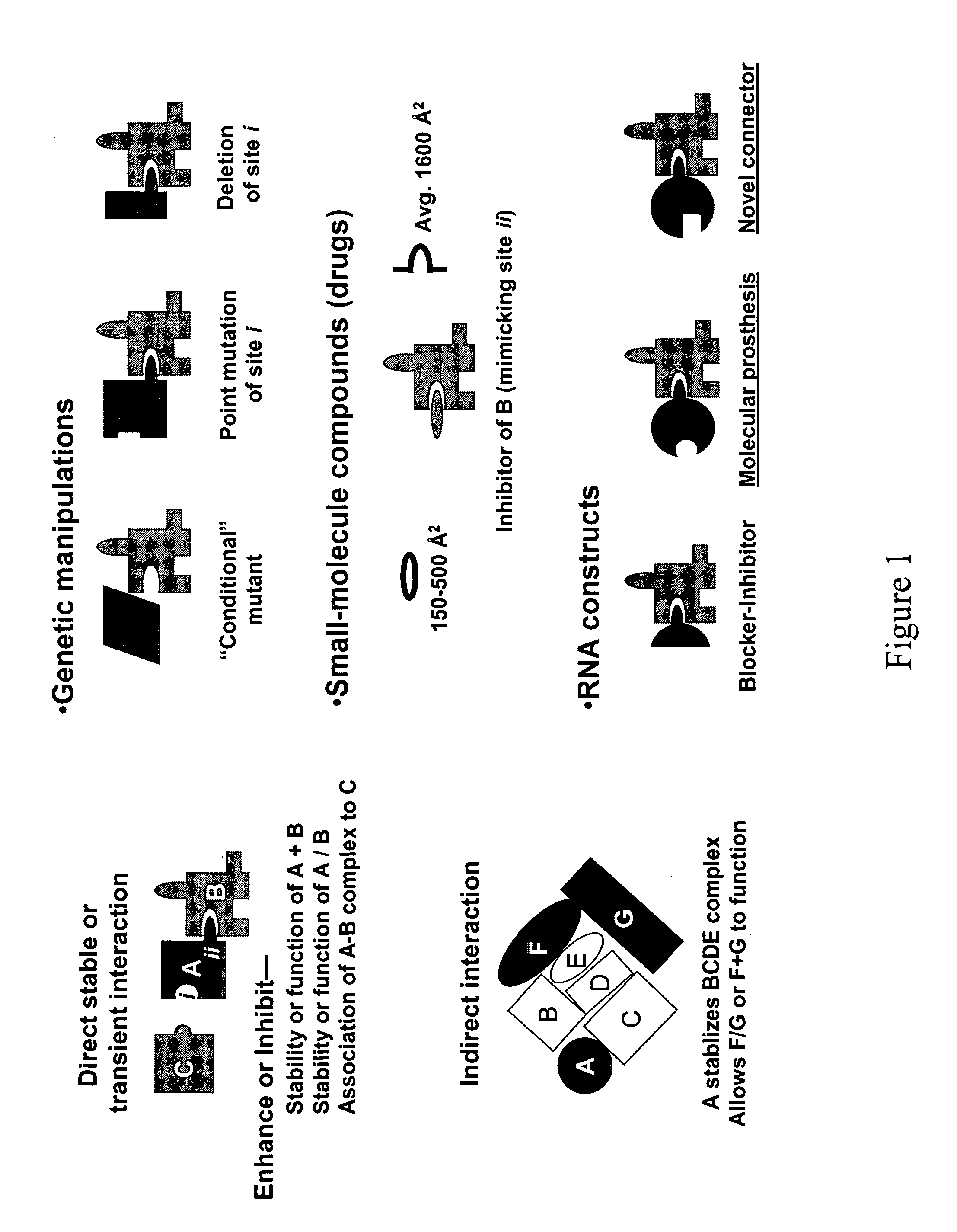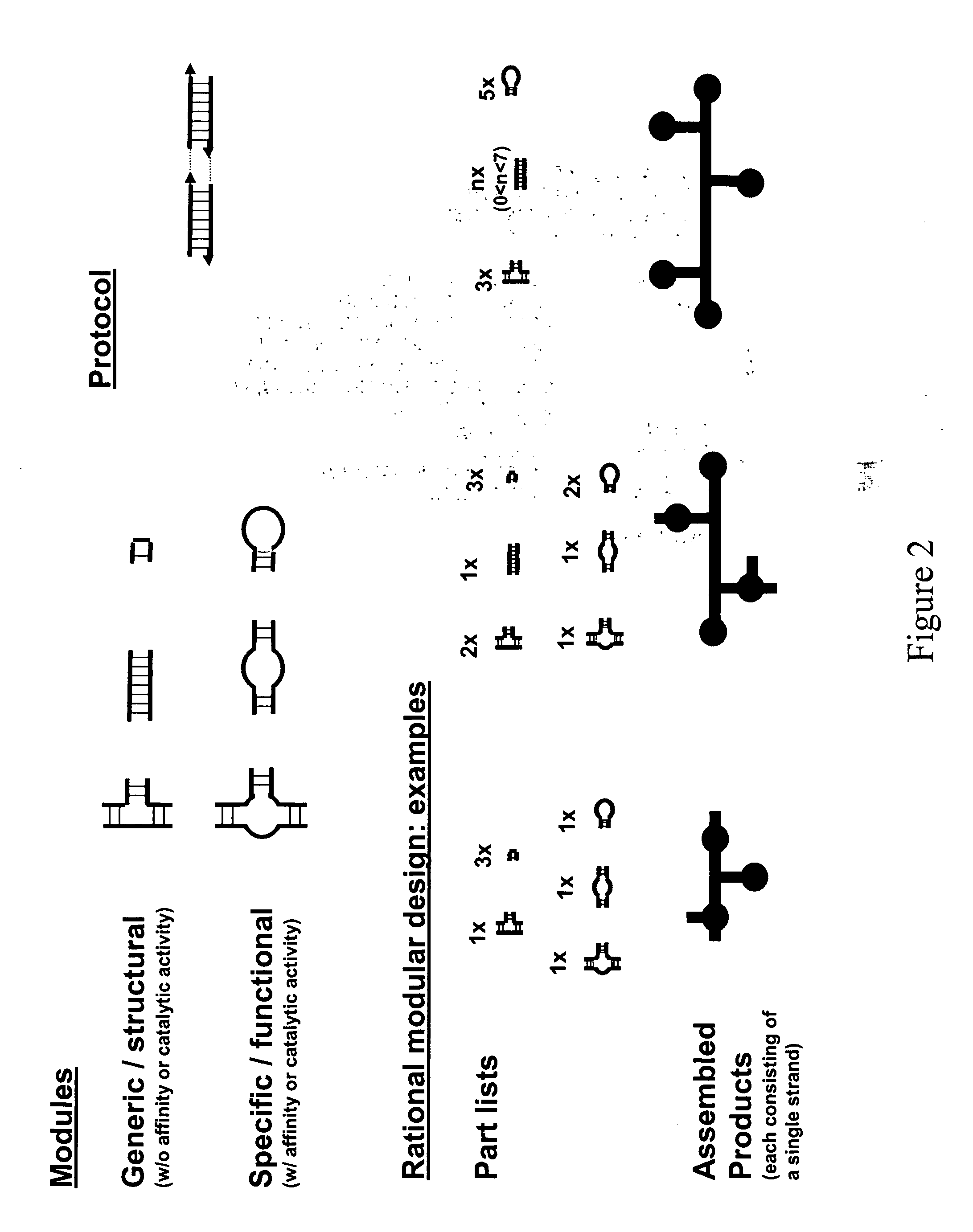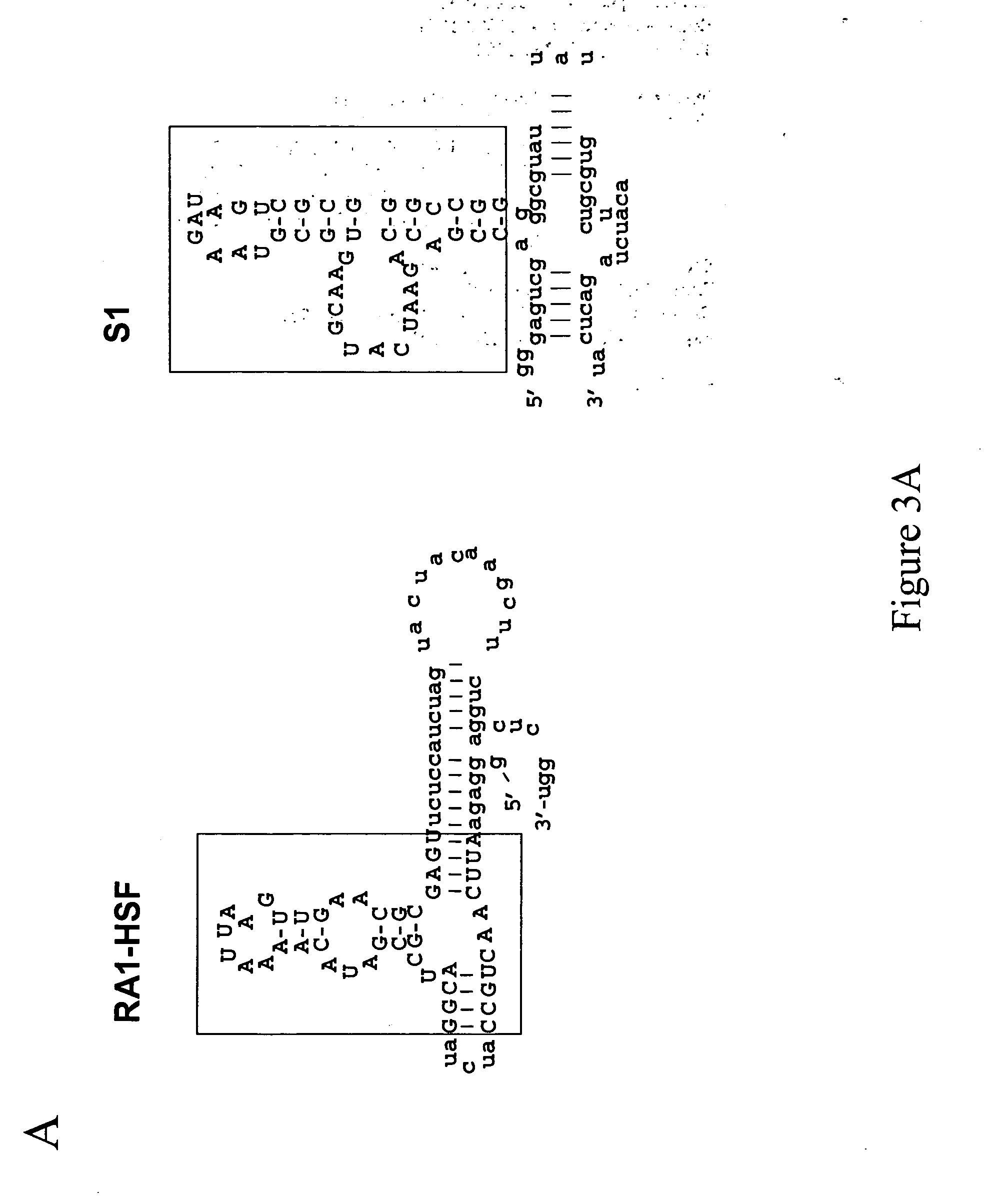Modular design and construction of nucleic acid molecules, aptamer-derived nucleic acid constructs, RNA scaffolds, their expression, and methods of use
a technology modular design, applied in the field of modular design and construction of nucleic acid molecules, can solve the problems of limited repertoire of useful naturally occurring single-site domains, difficult generating novel affinity by de novo protein design, and limitations when considered for protein constructs, etc., to achieve the effect of facilitating biomacromolecule folding, increasing or decreasing stability, and reducing the number o
- Summary
- Abstract
- Description
- Claims
- Application Information
AI Technical Summary
Benefits of technology
Problems solved by technology
Method used
Image
Examples
example 1
Proteins and Antibodies
[0142] ImmunoPure® streptavidin, horseradish peroxidase conjugated streptavidin, and Texas Red® conjugated streptavidin were purchased from Pierce Biotechnology (Rockford, Ill.). Full-length B52 protein was prepared from a baculovirus expression system as described previously (Shi et al., “A Specific RNA Hairpin Loop Structure Binds the RNA Recognition Motifs of the Drosophila SR Protein B52,” Mol. Cell Biol. 17:1649-1657 (1997), which is hereby incorporated by reference in its entirety). His-tagged B52-RRMs and His-tagged dHSF were cloned in a pET vector (Novagen, Madison, Wis.), expressed in BL21 cells, and purified using Ni-NTA Superflow matrix (Qiagen, Valencia, Calif.). The monoclonal antibody By32 was described in Champlin et al., “Characterization of a Drosophila Protein Associated with Boundaries of Transcriptionally Active Chromatin,”Genes and Development 5:1611-1621 (1991), which is hereby incorporated by reference in its entirety. The anti-His anti...
example 2
Oligonucleotides
[0143] The aptabodies (i.e., aptamer-containing antibody mimics) were prepared by in vitro transcription (see infra) from templates made from the following oligonucleotides:
[0144] BBS-5′, which has a nucleotide sequence corresponding to SEQ ID NO: 1 as follows:
GTAATACGAC TCACTATAGG GATCGCCGCG GCTGGTCAAC CAGGCGACCG CCGCGGCCAC60AGCGGTGGGC TGGTCA76
[0145] BBS-3′, which has a nucleotide sequence corresponding to SEQ ID NO: 2 as follows:
GAATCCCGAA GGATCCGGGA ACGCTGGTGG GCGGTCGCCT GGTTGACCAG CCCACCGCTG60TGGCCGCGGC GGTCGCCT78
[0146] SAa-5′, which has a nucleotide sequence corresponding to SEQ ID NO: 3 as follows:
GTAATACGAC TCACTATAGG ATCCGTGACC GACCAGAATC ATGCAAGTGC GTAAGATAGT60CGCGGGTCGG GTCATACTCC80
[0147] SAa-3′, which has a nucleotide sequence corresponding to SEQ ID NO: 4 as follows:
GAATCCGCCT CCCGGCCCGC GACTATCTTA CGCACTTGCA TGATTCTGGC CGGGAGTATG60ACCCGACCCG CGACTATCTT80
[0148] TAR Mal-5′, which has a nucleotide sequence corresponding to SEQ ID NO: 5 as follows:...
example 3
Aptabody Templates and RNAs
[0155] As illustrated in FIG. 6A, a pair of oligonucleotides were annealed together and underwent bi-directional primer extension under the conditions of regular PCR with only one thermo-cycle. The products were gel purified and used as templates to produce homo-dimers by in vitro transcription using the T7-MEGAscript™ in vitro transcription kit (Ambion, Inc., Austin, Tex.) according to the manufacturer's instructions. After testing the activity of the dimers by electrophoretic mobility shift (“EMS”) assay (described in Example 4 below), the templates for di-dimers were constructed by digesting the dimer templates with the restriction endonuclease BamHI, followed by ligation using T4 DNA ligase. The gel-purified products from this step served as aptabody templates in in vitro transcription using the same method described above.
[0156] Secondary structures were predicted using the folding program Mfold by Zuker and Turner, Version 3.1.
[0157] The following...
PUM
| Property | Measurement | Unit |
|---|---|---|
| Electrical conductance | aaaaa | aaaaa |
| Electrical resistance | aaaaa | aaaaa |
| Stability | aaaaa | aaaaa |
Abstract
Description
Claims
Application Information
 Login to View More
Login to View More - R&D
- Intellectual Property
- Life Sciences
- Materials
- Tech Scout
- Unparalleled Data Quality
- Higher Quality Content
- 60% Fewer Hallucinations
Browse by: Latest US Patents, China's latest patents, Technical Efficacy Thesaurus, Application Domain, Technology Topic, Popular Technical Reports.
© 2025 PatSnap. All rights reserved.Legal|Privacy policy|Modern Slavery Act Transparency Statement|Sitemap|About US| Contact US: help@patsnap.com



